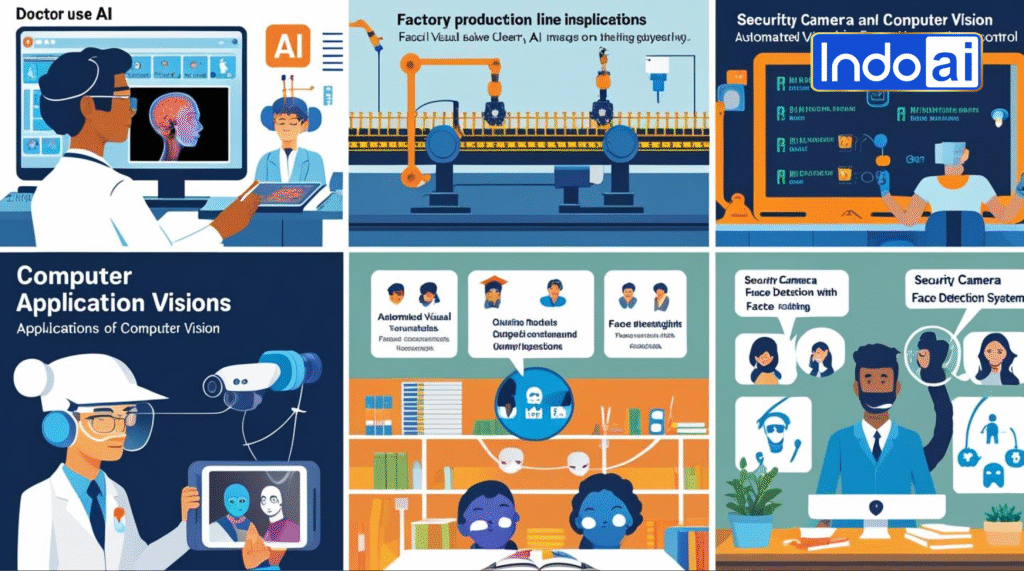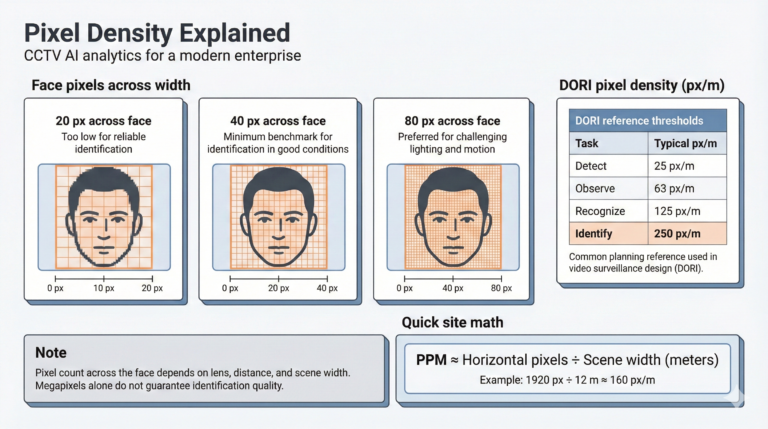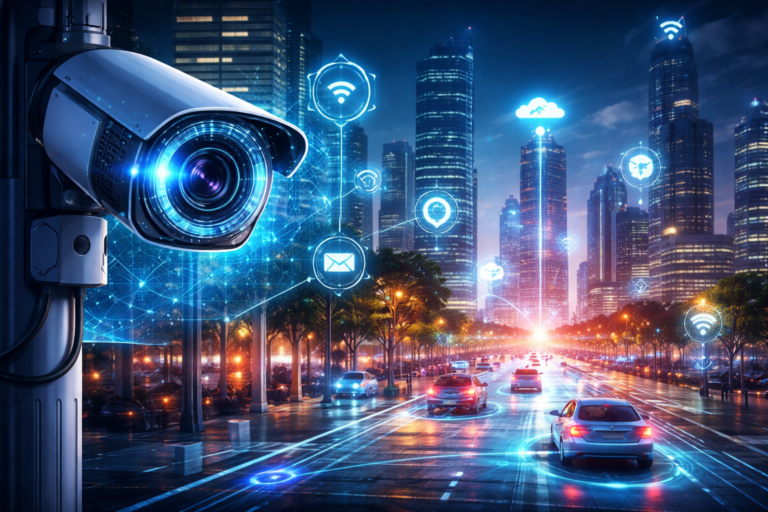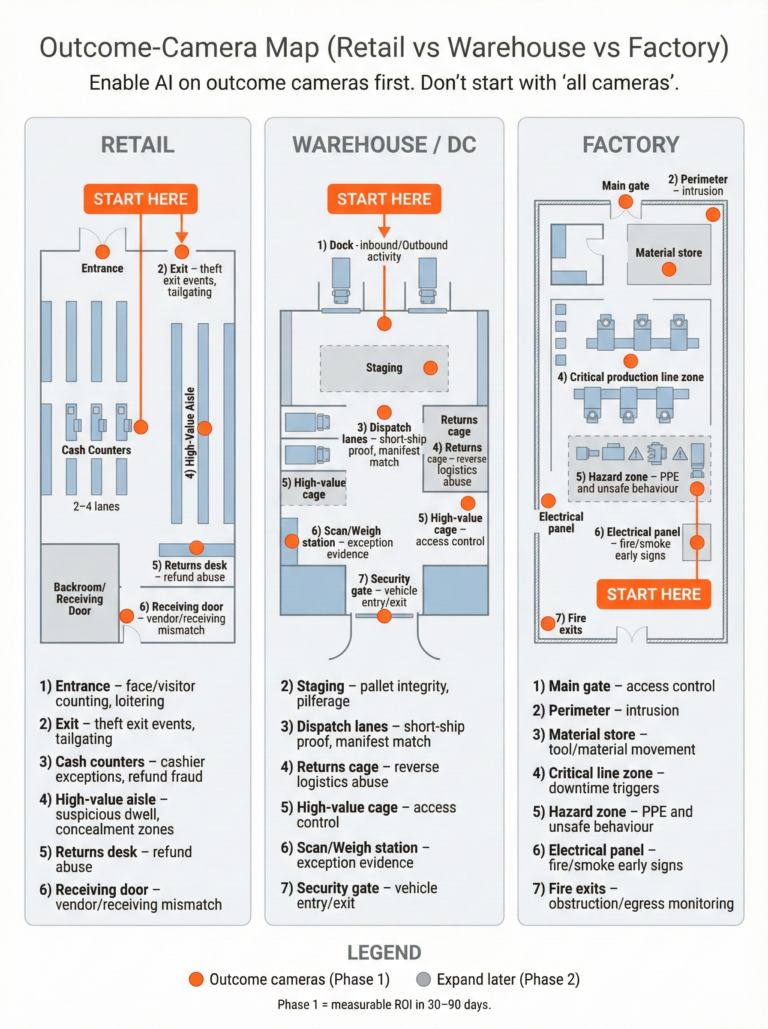Computer vision is the field of computer science and artificial intelligence that deals with enabling computers to derive, interpret and react to information coming from images, video-frames and other input methods.

How does computer vision work?
Computer vision is a field of artificial intelligence that enables computers and systems to derive meaningful information from digital images, videos and other visual inputs — and take actions or make recommendations based on that information.
Computer vision works by using machine learning and neural networks to teach computers how to see and understand visual data. Machine learning is a type of artificial intelligence that uses algorithms to learn from data and make predictions. Neural networks are a type of machine learning model that mimic the structure and function of the human brain.
To recognize images, computer vision uses a special kind of neural network called a convolutional neural network (CNN). A CNN breaks down images into pixels that are given labels or tags. It then uses mathematical operations to combine the pixels and extract features, such as edges, shapes, colours, textures, etc. CNN uses these features to make predictions about what the image contains or represents.
CNN learns from data by comparing its predictions with the actual labels or outcomes. It adjusts its parameters to improve its accuracy over time. This process is called training. The more data the CNN is trained on, the better it can recognize images.
Computer vision can be used for various applications, such as face recognition, object detection, medical imaging, self-driving cars, etc. Computer vision can perform tasks that the human visual system can do, but faster and more accurately.
Why is computer vision important?
Computer vision is important because it enables computers to perform tasks that require human vision, such as recognizing faces, detecting objects, diagnosing diseases, driving cars, etc. Computer vision can also enhance human capabilities by providing faster, more accurate, and more reliable visual information. Computer vision can benefit various industries and domains, such as healthcare, manufacturing, education, security, entertainment, etc.
Some examples of how computer vision is important are:
– In healthcare, computer vision can help diagnose medical conditions, monitor vital signs, analyse medical images, assist surgeries, etc. For instance, computer vision can detect skin cancer by analysing images of skin lesions and comparing them with a database of known cases.
– In manufacturing, computer vision can help improve quality control, automate inspection, optimise production, reduce waste, etc. For example, computer vision can identify defects in products or components by comparing them with a reference image or model.
– In education, computer vision can help enhance learning outcomes, personalise instruction, assess student performance, facilitate online learning, etc. For example, computer vision can recognize facial expressions and gestures of students and provide feedback or guidance accordingly.
– In security, computer vision can help prevent crime, protect assets, enforce laws, identify suspects, etc. For example, computer vision can recognize faces or fingerprints of individuals and match them with a database of criminal records or watchlists.
– In entertainment, computer vision can help create realistic graphics, generate special effects, augmented reality, synthesise media, etc. For example, computer vision can create lifelike avatars or characters by capturing the facial movements and expressions of human actors.
These are just some of the many applications and benefits of computer vision that demonstrate its importance in today’s world. Computer vision is a rapidly evolving field that has the potential to transform various aspects of human life and society.
Where is computer vision used?
Computer vision is important because it enables computers to perform tasks that require human vision, such as recognizing faces, detecting objects, diagnosing diseases, driving cars, etc. Computer vision can also enhance human capabilities by providing faster, more accurate, and more reliable visual information. Computer vision can benefit various industries and domains, such as healthcare, manufacturing, education, security, entertainment, etc.
Some examples of how computer vision is important are:
– In healthcare, computer vision can help diagnose medical conditions, monitor vital signs, analyse medical images, assist surgeries, etc. For instance, computer vision can detect skin cancer by analysing images of skin lesions and comparing them with a database of known cases.
– In manufacturing, computer vision can help improve quality control, automate inspection, optimise production, reduce waste, etc. For example, computer vision can identify defects in products or components by comparing them with a reference image or model.
– In education, computer vision can help enhance learning outcomes, personalise instruction, assess student performance, facilitate online learning, etc. For example, computer vision can recognize facial expressions and gestures of students and provide feedback or guidance accordingly.
– In security, computer vision can help prevent crime, protect assets, enforce laws, identify suspects, etc. For example, computer vision can recognize faces or fingerprints of individuals and match them with a database of criminal records or watchlists.
– In entertainment, computer vision can help create realistic graphics, generate special effects, augmented reality, synthesise media, etc. For example, computer vision can create lifelike avatars or characters by capturing the facial movements and expressions of human actors.
These are just some of the many applications and benefits of computer vision that demonstrate its importance in today’s world. Computer vision is a rapidly evolving field that has the potential to transform various aspects of human life and society.
What is computer vision in AI?
Computer vision in AI is a field that enables computers and systems to derive meaningful information from digital images, videos and other visual inputs, and take actions or make recommendations based on that information. Computer vision uses machine learning and neural networks to teach computers to see, interpret and understand the world around them through visual data. Computer vision can be used for various applications, such as optical character recognition, face detection, self-driving cars, medical image analysis, augmented reality and more. Computer vision is an important and growing field of AI that aims to mimic human vision and enable computers to interact with their environment in a natural way.




